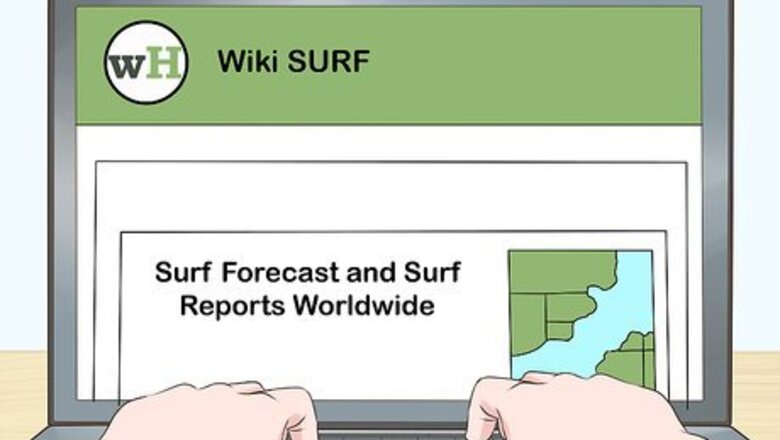
views
Scouting the Surf

Find a good spot for bodysurfing. Look for local beaches that don't get very crowded: you'll need a bit of space to properly bodysurf, and you don't want to worry about knocking over any unsuspecting beachgoers. Choose a soft, sandy beach with a gradual slope. Avoid jagged rocks, tide pools, and shallow swaths of seaweed. Begin bodysurfing on a day when the waves are substantial enough to propel you along (1-3 feet) but not so large that they drag you under. As you improve, you might learn to bodysurf confidently in more dangerous conditions. Start with small waves and sandy bottoms until you get the motions down. If a swell drags you along a rocky bottom, you might be seriously injured. Check waves online. Run a web search for "swells at [local beach]" or "surf conditions [your area]". Visit Surfline.com, Surf-forecast.com, or another site.
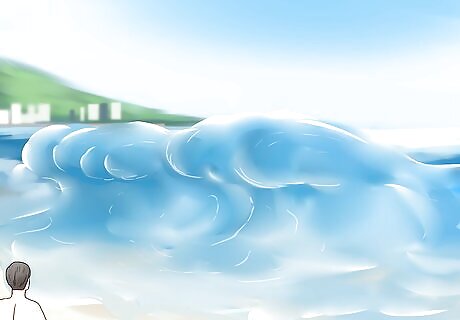
Watch the waves. Get out into the water and watch where the waves break. The best time to catch a wave is right before it begins to crest (crash.) Wade out into the water and get into position so that you are prepared to catch the waves right where they crest. Gauge the height and the power of the surf, and make sure that you're confident surfing here. You should be facing away from shore while you're watching the swells. When the time comes to catch a wave, you'll spin to face the shore so that you can ride the surge in. Make sure that there are no rocks or other obstacles in the way of your ride – above or below the water.
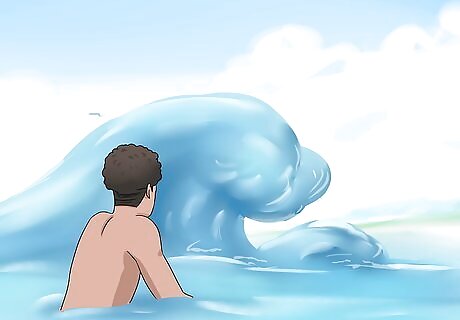
Wait for the perfect wave. Most of the waves that come your way will not be ideal for bodysurfing. Get used to diving under or floating over the waves that come. The most graceful way is usually to dive deep into the space beneath the crest of the oncoming wave. This way, you will pass through the wave without taking any of its force. If the waves are small enough, you can just jump over the crests or let them knock you around a bit. Try to take the opportunity to practice "diving deep" into the waves. If you don't dodge the bad ones correctly, you'll get rolled by waves faster than you'd think. If you take a pounding from the waves: get into the "safe zone," which is the area further out to sea beyond where the waves are breaking. Alternately, simply swim to shore and get out of the water to take a break.
Catching a Wave
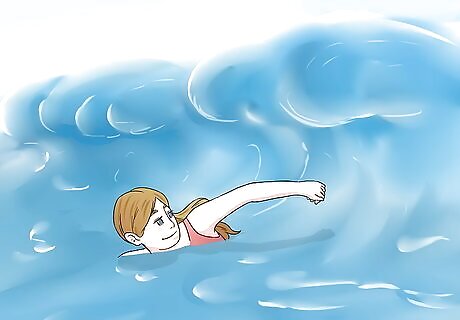
Spin and paddle hard. When you see a wave that you like, spin around to face the shore so that the wave is coming at your back. Start swimming as hard as you can. Time it so that you start paddling just before the wave reaches you. You want to be moving about as fast as the wave in order to stay above the water and ensure a good ride. Use a freestyle or crawl stroke for maximum speed here. Use your arms to generate some forward motion and establish a bit of control in the water.
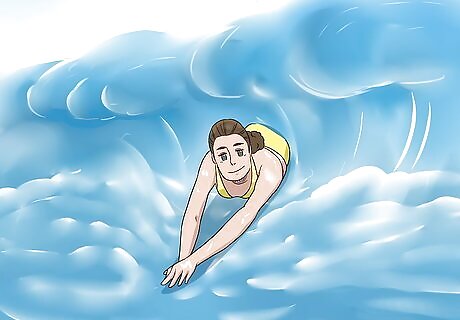
Ride the wave. Keep paddling hard as you feel the water swell around you, pick you up, and carry your forward. Steer with your arms and kick with your feet. Pump your feet as quickly and powerfully as you can to keep up your momentum. If you are swimming fast enough, then you should wind up on top of the wave. Let it carry you to shore. Consider the "Superman" pose. Keep your body rigid with your arms held straight out in front of you. This can be a good way to pick up speed, although you won't be able to steer. Many beginning bodysurfers get dragged under and tumbled while trying this move. Keep kicking and paddling to ride the wave for as long as possible. After the crest, the wave will gradually peter out until it cannot maintain the force to carry you any further. If you are swimming hard, you can prolong your ride.
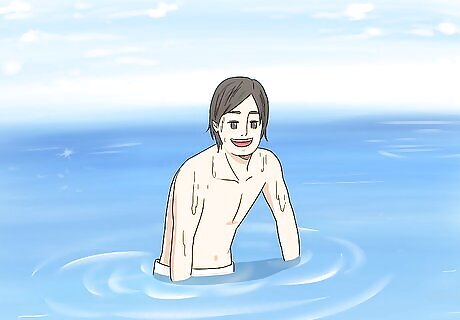
Get up when you can. The wave will carry you until there is insufficient force to sweep you along. If you're bodysurfing on a beach with a gradual, sandy slope, then you may find yourself laying belly-down in the shallows of the shore. As the wave slows down, you should be able to exercise a bit more control over your direction. Stand up and get out of the way of the next wave!
Bodysurfing with Others
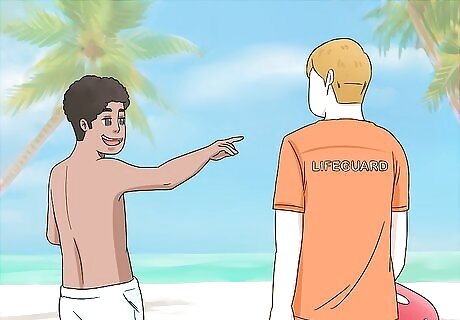
Don't bodysurf alone. Ride waves with certified lifeguards around, especially when you are first learning. Bodysurf with a friend or family member, whenever possible, so that you have someone looking out for you if anything goes wrong.
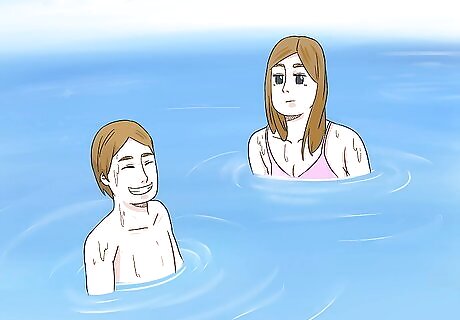
Always follow surf etiquette. Scan your surroundings before you try to catch a wave. Make sure that there's no one in your way, and that you aren't in anyone else's way. If someone else is already riding a wave, then it's up to you to get out of the way. Don't try to "drop in" on anybody. This applies to board surfing as well as bodysurfing. To get out of the way of someone who's already surfing: paddle hard in a direction perpendicular to the person's path. Dive deep under the water if you can't get out of the way in time.

Watch and ask for help. Go bodysurfing with a friend or family member who already knows how. Don't be too proud to ask for help! If you don't want to ask, then you can at least watch other people catch waves. Keep an eye on their form and their timing. Try to copy their motions until you get it right. Watch videos of people bodysurfing. Search the Internet for bodysurfing videos to get a feel for the process of catching a wave.


















Comments
0 comment